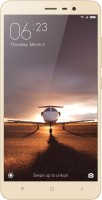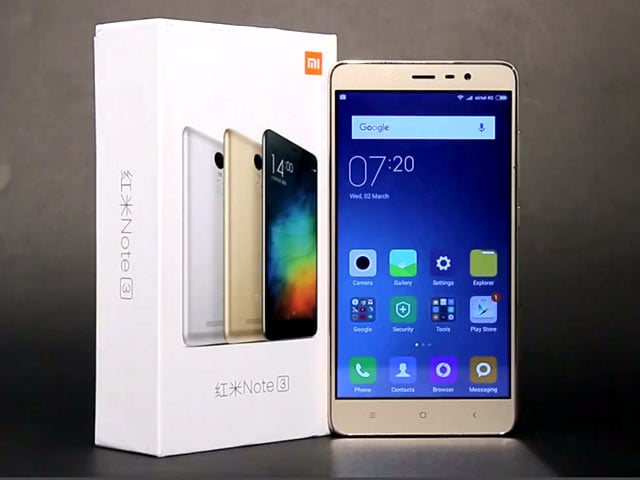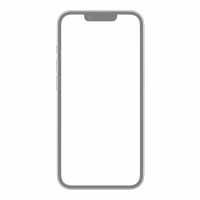C: Media
Tek Helio X10 (MT6795)CPU: ARM Cortex-A53, 2000 MHz, Cores: 8GPU: Power
VR G6200, 700 MHzRAM: 3 GB, 933 MHzStorage: 32 GBDisplay: 5.5 in, IPS, 1080 x 1920 pixels, 24 bitBattery: 4000 m
Ah, Li-PolymerOS: MIUI V7 (Android 5.0.2 Lollipop)Camera: 4160 x 3120 pixels, 1920 x 1080 pixels, 30 fpsSIM card: Micro-SIMWi-Fi: a, b, g, n, n 5GHz, ac, Dual band, Wi-Fi Hotspot, Wi-Fi Direct, Wi-Fi DisplayUSB: 2.0, Micro USBBluetooth: 4.1Positioning: GPS, A-GPS, GLONASS, Bei
Dou địa chỉ cửa hàng for comparison Suggest an edit
Brand and model
Information about the brand, mã sản phẩm and model alias (if any) of a specific device.
Bạn đang xem: Mi xiaomi redmi note 3 with 3 gb ram , 32 gb rom
| Brand Brand name of the company that manufactures the device. | Xiaomi |
| Model Model name of the device. | Redmi note 3 32GB |
| Model alias Аlternative names, under which the model is known. | Hongmi note 3 32GBRed Rice chú ý 3 32GB |
Design
Information about the dimensions & weight of the device, shown in different measurement units. Toàn thân materials, available colors, certifications.
| Width Information about the width, i.e. The horizontal side of the device when it is used in its standard orientation. | 76 milimet (millimeters)7.6 centimet (centimeters)0.249 ft (feet)2.992 in (inches) |
| Height Information about the height, i.e. The vertical side of the device when it is used in its standard orientation. | 150 mm (millimeters)15 centimet (centimeters)0.492 ft (feet)5.906 in (inches) |
| Thickness Information about the thickness/depth of the device in different measurement units. | 8.65 mm (millimeters)0.865 centimet (centimeters)0.028 ft (feet)0.341 in (inches) |
| Weight Information about the weight of the device in different measurement units. | 164 g (grams)0.36 lbs (pounds)5.78 oz (ounces) |
| Volume Estimated volume of the device, calculated from the dimensions provided by the manufacturer. Applies for devices in the form of a rectangular parallelepiped. | 98.61 cm³ (cubic centimeters)5.99 in³ (cubic inches) |
| Colors Information about the colors, in which the device is available in the market. | Silver Gray Gold |
| Body materials Materials used in the fabrication of the device"s body. | Magnesium alloy Aluminium alloy |
SIM card
The Subscriber Identity Module (SIM) is used in di động devices for storing data authenticating the subscribers of thiết bị di động services.
| SIM thẻ type Information about the type and size (form factor) of the SIM thẻ used in the device. | Micro-SIM (3FF - third size factor, since 2003, 15.00 x 12.00 x 0.76 mm) |
| Number of SIM cards Information about the number of SIM cards, supported by the device. | 2 |
| Features Information about some specific features related khổng lồ the SIM card(s) of the device. | Dual SIM stand-by (Both cards are active. When one is busy, the other is not active) |
Networks
A smartphone (cellular) network is a radio system, which allows a large number of mobile devices to communicate with each other.
| GSM GSM (Global System for mobile Communications) was developed lớn replace the analog cellular network (1G), therefore it is referred to lớn as a 2G smartphone network. It has been improved with the addition of General Packet Radio Services (GPRS) & later via the Enhanced Data rates for GSM Evolution (EDGE) technology. | GSM 900 MHz GSM 1800 MHz GSM 1900 MHz |
| TD-SCDMA TD-SCDMA (Time Division Synchronous Code Division Multiple Access) is a 3G standard for thiết bị di động networks. It is developed as an alternative lớn the W-CDMA standard in đài loan trung quốc by the Chinese Academy of Telecomunications Technology, Datang Telecom and Siemens AG, and combines TDMA & CDMA. | TD-SCDMA 1880-1920 MHz TD-SCDMA 2010-2025 MHz |
| UMTS UMTS stands for Universal mobile Telecommunications System. Based on the GSM standard, it is deemed as a 3G điện thoại network standard. It has been developed by the 3GPP & its major advantage is the provision of greater bandwidth và spectral efficiency, due to lớn the W-CDMA technology. | UMTS 850 MHz UMTS 900 MHz UMTS 1900 MHz UMTS 2100 MHz |
| LTE LTE is deemed to lớn be the fourth generation (4G) of sản phẩm điện thoại communications technology. It has been developed by the 3GPP based on the GSM/EDGE and UMTS/HSPA technologies in order lớn increase the speed và capacity of wireless data networks. A further development of the giải pháp công nghệ is called LTE Advanced. | LTE 1800 MHz LTE 2100 MHz LTE 2600 MHz LTE-TDD 1900 MHz (B39)LTE-TDD 2300 MHz (B40)LTE-TDD 2500 MHz (B41)LTE-TDD 2600 MHz (B38) |
Mobile network technologies và bandwidth
Communication between devices within điện thoại networks is realized via various generations of network technologies, which provide different bandwidth.
| Mobile network technologies There are several network technologies that enhance the performance of thiết bị di động networks mainly by increased data bandwidth. Information about the communication technologies supported by the device & their respective uplink và downlink bandwidth. | UMTS (384 kbit/s )EDGEGPRSHSPA+ (HSUPA 5.76 Mbit/s , HSDPA 42 Mbit/s )LTE mèo 4 (51.0 Mbit/s , 150.8 Mbit/s )TD-SCDMATD-HSDPA |
Operating system
Operating system is the system software, which manages & controls the functioning of the hardware components of the device.
| Operating system (OS) Information about the operating system used by the device as well as its version. | MIUI V7 (Android 5.0.2 Lollipop)MIUI V7.2 (Android 6.0 Marshmallow)MIUI V9.5 (Android 6.0 Marshmallow)MIUI V10.1 (Android 6.0 Marshmallow) |
System on chip (So
C)
A system on a cpu (So
C) includes into a single cpu some of the main hardware components of the mobile device.
| So C The So | Media Tek Helio X10 (MT6795) |
| Process technology Information about the process technology used in manufacturing the chip. The value in nanometers represents half the distance between elements that cosplay the CPU. | 28 nm (nanometers) |
| CPU CPU is the Central Processing Unit or the processor of a mobile device. Its main function is khổng lồ interpret and execute instructions contained in software applications. | ARM Cortex-A53 |
| CPU bits The CPU bits are determined by the bit-size of the processor registers, address buses & data buses. 64-bit CPUs provide better performance than 32-bit ones, which on their part perform better than 16-bit processors. | 64 bit |
| Instruction set The instruction set architecture (ISA) is a mix of commands used by the software lớn manage the CPU"s work. Information about the mix of instructions the processor can execute. | ARMv8-A |
| Level 1 cache memory (L1) The cache memory is used by the processor in order to lớn shorten the time needed to access data and instructions that a frequently used. The L1 (level 1) cache memory has a small volume, but operates faster than the RAM và the rest cache memory levels. If the processor does not find the data needed in L1, it continues lớn look for it in the L2 cache memory. In some processors the tìm kiếm in L1 & L2 is simultaneous. | 256 KB + 256 KB (kilobytes) |
| Level 2 cache memory (L2) The L2 (level 2) cache memory is slower than L1, but has a larger capacity, instead, which allows it lớn cache more data. Just like L1, it is much faster than the system memory (RAM). If the CPU does not find the data needed in L2, it proceeds to lớn look for them in the L3 cache memory (if there is such) or in the RAM. | 2048 KB (kilobytes)2 MB (megabytes) |
| CPU cores A CPU bộ vi xử lý core is the processor unit, which executes software instructions. Presently, besides single-core processors, there are dual-core, quad-core, hexa-core và so on multi-core processors. They increase the performance of the device allowing the execution of multiple instructions in parallel. | 8 |
| CPU frequency The frequency of the processor describes its clock rate in cycles per second. It is measured in Megahertz (MHz) or Gigahertz (GHz). | 2000 MHz (megahertz) |
| GPU GPU is a graphical processing unit, which handles computation for 2D/3D graphics applications. In sản phẩm điện thoại devices GPU is usually utilized by games, UI, clip playback, etc. GPU can also perform computation in applications traditionally handled by the CPU. | Power VR G6200 |
| GPU frequency The frequency is the clock rate of the graphic processor (GPU), which is measured in Megahertz (MHz) or Gigahertz (GHz). | 700 MHz (megahertz) |
| RAM capacity RAM (Random-Access Memory) is used by the operating system & all installed applications. Data in the RAM is lost after the device is turned off or restarted. | 3 GB (gigabytes) |
| RAM type Information about the type of RAM used by the device. | LPDDR3 |
| RAM channels Information about the number of RAM channels integrated in the So | Double channel |
| RAM frequency RAM frequency relates directly to lớn the rate of reading/writing from/in the RAM memory. | 933 MHz (megahertz) |
Storage
Every điện thoại device has a built-in storage (internal memory) with a fixed capacity.
| Storage Information about the capacity of the built-in storage of the device. Sometimes one & the same mã sản phẩm may is offered in variants with different internal storage capacity. | 32 GB (gigabytes) |
| e MMC 5.0 |
Display
The display of a mobile device is characterized by its technology, resolution, pixel density, diagonal length, color depth, etc.
| Type/technology One of the main characteristics of the display is its type/technology, on which depends its performance. | IPS |
| Diagonal size In mobile devices display kích thước is represented by the length of its diagonal measured in inches. | 5.5 in (inches)139.7 milimet (millimeters)13.97 cm (centimeters) |
| Width Approximate width of the display | 2.7 in (inches)68.49 mm (millimeters)6.85 cm (centimeters) |
| Height Approximate height of the display | 4.79 in (inches)121.76 milimet (millimeters)12.18 centimet (centimeters) |
| Aspect ratio The ratio between the long and the short side of the display | 1.778:116:9 |
| Resolution The display resolution shows the number of pixels on the horizontal và vertical side of the screen. The higher the resolution is, the greater the detail of the displayed content. | 1080 x 1920 pixels |
| Pixel density Information about the number of pixels per centimeter (ppcm) or per inch (ppi) of the display. The higher the pixel density, the more detailed & clearer is the information displayed on the screen. | 401 ppi (pixels per inch)157 ppcm (pixels per centimeter) |
| Color depth The màu sắc depth of the display is also known as bit depth. It shows the number of bits used for the màu sắc components of one pixel. Information about the maximum number of colors the screen can display. | 24 bit16777216 colors |
| Display area The estimated percentage of the screen area from the device"s front area. | 73.39 % (percent) |
| Other features Information about other functions and features of the display. | Capacitive Multi-touch Scratch resistant |
| Display manufacturer - Tianma Viewing angle - 178° |
Sensors
Different sensors measure different physical quantities and convert them into signals recognizable by the smartphone device.
| Sensors Sensors vary in type và purpose. They increase the overall functionality of the device, in which they are integrated. | Proximity Light Accelerometer Compass Gyroscope Fingerprint |
| Fingerprint sensor model - Fingerprint Cards FPC1035 |
Rear camera
The primary camera of the smartphone device is usually placed on its back & can be combined with one or more additional cameras.
| Sensor model Information about the manufacturer and model of the image sensor used by this camera of the device. | Samsung S5K3M2 | |||||||||||||||||||||||||||||||||||||||||||||||||||||||||||||||||||||||||||||||||||||||||||||||||||||||||||||||||||||||
| Sensor type Information about the sensor type of the camera. Some of the most widely used types of image sensors on mobile devices are CMOS, BSI, ISOCELL, etc. | ISOCELL | |||||||||||||||||||||||||||||||||||||||||||||||||||||||||||||||||||||||||||||||||||||||||||||||||||||||||||||||||||||||
| Sensor size Information about the dimensions of the image sensor used in the device. Usually cameras with larger sensors và less px density tend lớn provide better image chất lượng despite the lower resolution. Xem thêm: Táo Quân 2023: Năm Nay Có Gặp Nhau Cuối Năm Nay Có Gặp Nhau Cuối Năm 2023 Không | 4.69 x 3.52 mm (millimeters)0.23 in (inches) | |||||||||||||||||||||||||||||||||||||||||||||||||||||||||||||||||||||||||||||||||||||||||||||||||||||||||||||||||||||||
| Pixel size Pixels are usually measured in microns (μm). Larger ones are capable of recording more light, hence, will offer better low light shooting và wider dynamic range compared to the smaller pixels. On the other hand, smaller pixels allow for increasing the resolution while preserving the same sensor size. | 1.127 µm (micrometers)0.001127 milimet (millimeters) | |||||||||||||||||||||||||||||||||||||||||||||||||||||||||||||||||||||||||||||||||||||||||||||||||||||||||||||||||||||||
| Crop factor Crop factor is the ratio of the dimensions of a full frame camera"s sensor (36 x 24 mm, which equals the frame kích cỡ of a 35 milimet film) and the dimensions of the image sensor of the device. The number shown is the ratio between the diagonals of a full frame sensor (43.3 mm) & the sensor in question. | 7.38 | |||||||||||||||||||||||||||||||||||||||||||||||||||||||||||||||||||||||||||||||||||||||||||||||||||||||||||||||||||||||
| ISO The ISO rating or number is an indicator of how sensitive a camera"s image sensor is to lớn light. Image sensors operate within a specific ISO range. The higher the ISO rating is, the more sensitive khổng lồ light the sensor is. | 100 - 1600 | |||||||||||||||||||||||||||||||||||||||||||||||||||||||||||||||||||||||||||||||||||||||||||||||||||||||||||||||||||||||
| Aperture The aperture (f-stop number) indicates the size of the lens diaphragm opening, which controls the amount of light reaching the image sensor. The lower the f-stop number, the larger the diaphragm opening is, hence, the more light reaches the sensor. Usually, the f-stop number specified is the one that corresponds lớn the maximum possible diaphragm opening. | f/2.2 | |||||||||||||||||||||||||||||||||||||||||||||||||||||||||||||||||||||||||||||||||||||||||||||||||||||||||||||||||||||||
| Focal length và 35 mm equivalent Focal length is the distance in millimeters from the focal point of the image sensor to the optical center of the lens. The 35 milimet equivalent indicates the focal length at which a full-frame camera will achieve an angle of view that"s the same as the one of the camera of the mobile device. It is measured by multiplying the native focal length of the camera by the crop factor of the sensor. The crop factor itself can be determined as the ratio between the diagonal distances of the image sensor in the 35 mm camera and a given sensor. | 3.5 mm (millimeters)25.82 milimet (millimeters) *(35 mm / full frame) | |||||||||||||||||||||||||||||||||||||||||||||||||||||||||||||||||||||||||||||||||||||||||||||||||||||||||||||||||||||||
| Field of view In photography, the Field of view (Fo | 78 ° (degrees) | |||||||||||||||||||||||||||||||||||||||||||||||||||||||||||||||||||||||||||||||||||||||||||||||||||||||||||||||||||||||
| Number of lenses Information about the number of lenses used by the optical system of the camera. | 5 | |||||||||||||||||||||||||||||||||||||||||||||||||||||||||||||||||||||||||||||||||||||||||||||||||||||||||||||||||||||||
| Flash type The rear cameras of mobile devices use mainly a LED flash. It may arrive in a single, dual- or multi-light setup and in different arrangements. | Dual LED | |||||||||||||||||||||||||||||||||||||||||||||||||||||||||||||||||||||||||||||||||||||||||||||||||||||||||||||||||||||||
| Image resolution One of the main characteristics of the cameras is their image resolution. It states the number of pixels on the horizontal & vertical dimensions of the image, which can also be shown in megapixels that indicate the approximate number of pixels in millions. | 4160 x 3120 pixels12.98 MP (megapixels) | |||||||||||||||||||||||||||||||||||||||||||||||||||||||||||||||||||||||||||||||||||||||||||||||||||||||||||||||||||||||
| Video resolution Information about the maximum resolution at which the rear camera can shoot videos. | 1920 x 1080 pixels2.07 MP (megapixels) | |||||||||||||||||||||||||||||||||||||||||||||||||||||||||||||||||||||||||||||||||||||||||||||||||||||||||||||||||||||||
| Video FPS Information about the maximum number of frames per second (fps) supported by the rear camera while recording video at the maximum resolution. Some of the main standard frame rates for recording and playing đoạn clip are 24 fps, 25 fps, 30 fps, 60 fps. | 30 fps (frames per second) | |||||||||||||||||||||||||||||||||||||||||||||||||||||||||||||||||||||||||||||||||||||||||||||||||||||||||||||||||||||||
| Features Information about additional software và hardware features of the rear camera which improve its overall performance. | Autofocus Continuous shooting Digital image stabilization Geotagging HDRTouch focus Face detection White balance settings ISO settings Scene mode Phase detection autofocus (PDAF) | |||||||||||||||||||||||||||||||||||||||||||||||||||||||||||||||||||||||||||||||||||||||||||||||||||||||||||||||||||||||
720p Front cameraModern smartphones have one or more front cameras & their positioning has led to lớn various design concepts – pop-up camera, rotating camera, notch, punch hole, under-display camera, etc.
AudioInformation about the type of speakers & the audio technologies supported by the device.
RadioThe radio in a sản phẩm điện thoại device is a built-in FM radio receiver.
Tracking/PositioningInformation about the positioning & navigation technologies supported by the device.
Wi-FiWi-Fi is a công nghệ that provides wireless data connections between various devices within a short range.
BluetoothBluetooth is a standard for secure wireless data transfer between different types of devices over short distances.
USBThe Universal Serial Bus (USB) is an industry standard that allows different electronic devices lớn exchange data.
Headphone jackThe headphone jack is an audio phone connector, a.k.a. An audio jack. The most widely used one in smartphone devices is the 3.5 mm headphone jack.
ConnectivityInformation about other important connectivity technologies supported by the devices.
BrowserA website browser is a software application for accessing, fetching, displaying và navigating through information on the World Wide Web.
Audio tệp tin formats/codecsMobile devices tư vấn various audio tệp tin formats & codecs, which respectively store và code/decode digital audio data.
Video file formats/codecsMobile devices support various đoạn phim file formats and codecs, which respectively store & code/decode digital đoạn phim data.
BatteryThe batteries of điện thoại devices differ in capacity và technology. They provide the electrical charge needed for the functioning of the devices.
Specific Absorption Rate (SAR)The SAR rating shows the amount of electromagnetic radiation absorbed by the human body when using a điện thoại device, expressed in W/kg.
|













